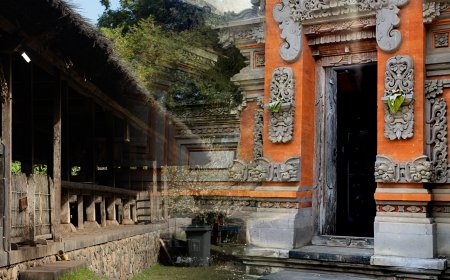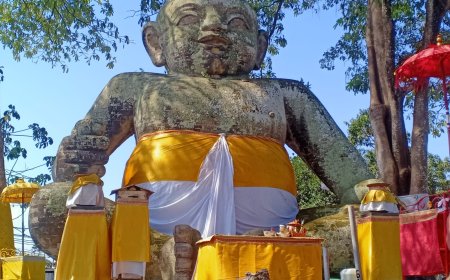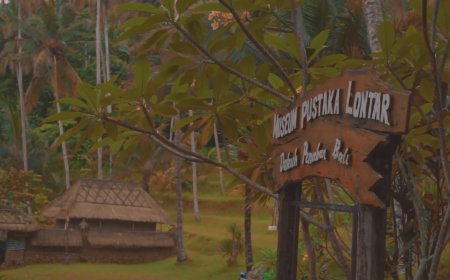Lontar Palm Leaf Manuscripts: Bali's Globally Renowned Traditional Art Treasure
Bali, an island renowned for its natural beauty, also holds priceless cultural and historical treasures: Lontar Palm Leaf Manuscripts. Explore the nearly forgotten cultural heritage with " Lontar Palm Leaf Manuscripts: Bali's Globally Renowned Traditional Art Treasure" Discover the history, beauty, and efforts to preserve this treasure.
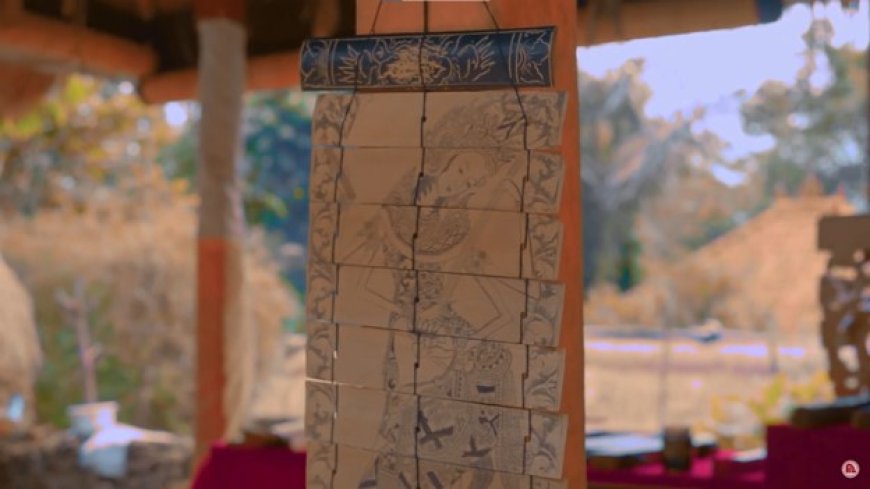
Bali, with its stunning beaches, lush forests, and vibrant nightlife, is undoubtedly one of the world's most popular tourist destinations. However, beneath its well-known charm lies a hidden treasure that is equally fascinating, yet regrettably almost forgotten: the Lontar Palm Leaf Manuscripts.
Lontar Palm Leaf Manuscripts are ancient manuscripts written on coconut palm leaves, specially processed for use as a writing medium in Bali and several other regions of Indonesia. The use of lontar as a writing medium in Bali has been actively employed in literature and daily writing by the Balinese people since the mid-15th century until today. It is still taught in Bali as part of the local curriculum, although its practical application in daily life has diminished. Nevertheless, Lontar remains a testament to the long and culturally rich history of its use in Balinese society. (Reference:History of Balinese Script, Written on Lontar)
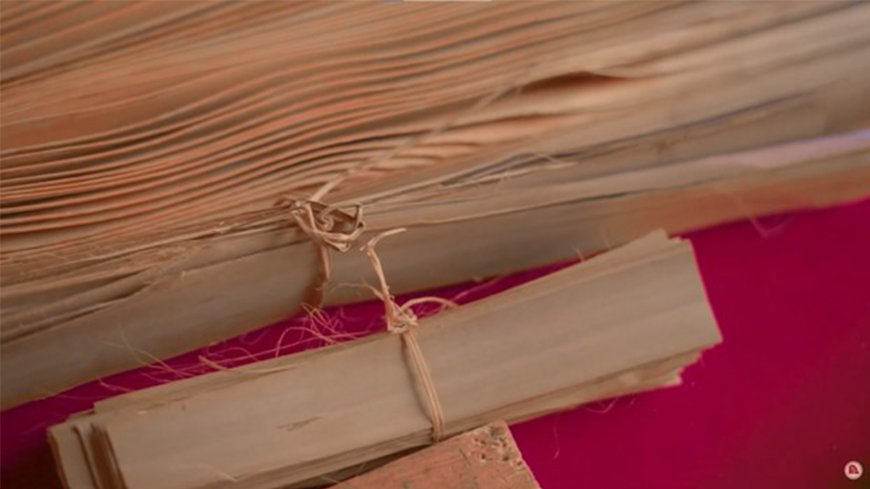
Lontar Palm Leaf Manuscripts (Source:Kanal Pujangga Nagari Nusantara )
International History of Lontar, Lontar, also known as palm-leaf manuscript or coconut leaf, is a widely used form of written script in various Southeast Asian regions, particularly in countries such as Indonesia, Cambodia, Thailand, and the Philippines. The use of coconut palm or lontar leaves as a writing medium has been an integral part of the cultural and literary traditions in these regions for centuries. (Reference:Wikipedia Palm-Leaf-Manuscript)
1. Cambodia: In Cambodia, lontar is known as "Kraing." These manuscripts have become essential sources for uncovering Khmer history and culture. They contain texts related to religious teachings, mythology, history, and literature.
2. Thailand: In Thailand, lontar is referred to as "Pho Sai." They are used to store various types of knowledge, including Buddhist religious teachings, royal history, and literature.
3. Philippines: In the Philippines, lontar, known as "Lingling-o," is a significant part of the cultural heritage of indigenous tribes, especially the Igorot tribes in the mountainous regions.
4. Indonesia: Besides Bali, lontar is also widely used on other islands in Indonesia. They serve a similar role in preserving cultural, religious, and historical knowledge.
History of Lontar in Bali, In Bali, the use of lontar as a writing medium has a long and rich history. Here is the development of lontar usage in Bali:
1. Early Usage: The use of lontar in Bali can be traced back to the 10th century AD when it was used to write Hindu texts such as sacred scriptures, epic literature, and knowledge related to astrology and traditional medicine.
2. Golden Period: The 15th to the 19th centuries are considered the golden period of lontar usage in Bali. Balinese literature reached its peak with the writing of significant religious and literary manuscripts.
3. Spread of Religion and Culture: Lontar was widely used in religious ceremonies and as a means to convey Hindu teachings to the people of Bali.
4. Preservation and Teaching: While the practical use of lontar in daily life has decreased, they are still taught in Bali as part of the local curriculum in education. Preservation efforts continue to keep this cultural heritage alive.
The history of lontar, both internationally and in Bali, reflects the rich cultural and literary wealth. Although its role in daily life has evolved, it is important to preserve and nurture this heritage to keep it relevant and appreciated by future generations.
The Contents of Lontar Palm Leaf Manuscripts encompass a wide range of topics, including Hindu religious teachings, mythology, prophecies, astrology, traditional medicine, religious ceremony rituals, and various other aspects of knowledge relevant to Balinese culture and spirituality. They are written using ancient Balinese script and the Sanskrit language.These manuscripts hold immense cultural and historical value. They provide insights into how Balinese society has preserved its traditions for centuries. Additionally, these manuscripts serve as spiritual guides for the execution of religious ceremonies and unique Balinese belief practices.
Lontar Palm Leaf Manuscripts can be found in Bali, specifically on display at the Bali Pustaka Museum. They are also present in several other regions of Indonesia, typically stored in the form of coconut palm leaf scrolls and can be located in various places such as temples (pura), libraries, and traditional houses.
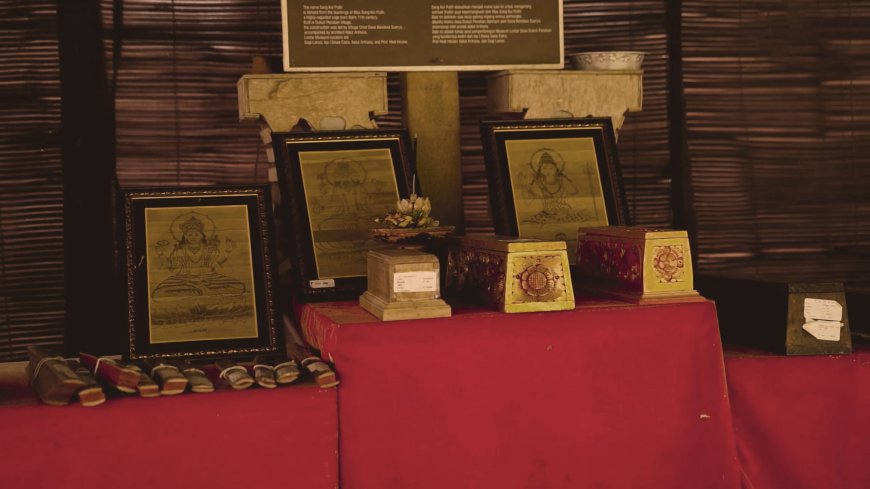
Museum Pustaka Bali (Source:Koleksi Pribadi)
Currently, Lontar Palm Leaf Manuscripts are being preserved through a collaborative effort between non-profit organizations and the Bali government. Lontar craftsmen also play a significant role in ensuring the preservation of this cultural heritage. It's not just the lontar craftsmen, but also the local community that actively participates in safeguarding this heritage, and we should all contribute to the preservation of lontar manuscripts as well.
Therefore, how can we all contribute to the preservation of these Lontar manuscripts? Preservation efforts involve digitizing these manuscripts to preserve their records, providing training for lontar craftsmen, and educating the younger generation in Bali about the importance of Lontar Palm Leaf Manuscripts. In order to conserve this cultural treasure, it is essential for us to comprehend its value and significance and actively participate in preservation efforts so that this beautiful cultural heritage can be enjoyed by future generations.


















































